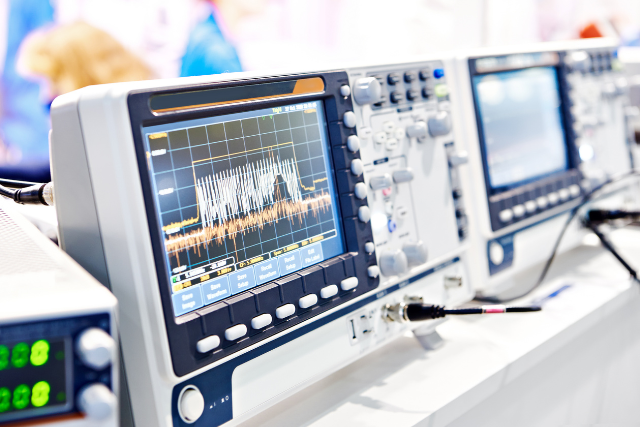The future of wireless charging is poised for transformative advancements that will redefine how we interact with technology. As we shift towards a more connected and cable-free world, wireless charging innovations will enhance efficiency, speed, and convenience, powering everything from smartphones to electric vehicles. Technologies such as resonant inductive charging, long-distance charging, and integration into smart homes are on the horizon, promising a seamless charging experience.
This article explores what’s coming next in wireless charging and how it will impact our daily lives, with an emphasis on key technological advancements, challenges, and future trends. As you read on, you’ll discover how wireless charging could soon change the way you power devices, including in your smart home and electric vehicle.
Table of Contents
Current State of Wireless Charging
Wireless charging has already changed how we power devices, from smartphones to smartwatches. Most consumers are familiar with placing their devices on charging pads, but the scope of wireless charging is expanding rapidly.
Qi Wireless Charging: The Current Standard
Currently, the most widely used standard is Qi wireless charging, developed by the Wireless Power Consortium (WPC). Qi chargers allow compatible devices, such as smartphones, earbuds, and smartwatches, to charge wirelessly by placing them on a charging pad. You can find Qi charging stations in public places like coffee shops, hotels, airports, and even vehicles. This accessibility has helped wireless charging become more mainstream.
Resonant Inductive Charging
Recent advancements have introduced resonant inductive charging, which allows devices to charge over a distance without direct contact with a charging pad. This new wireless charging technology is pushing boundaries, as you no longer need perfect alignment between your device and the charger.
Eco-Friendly Initiatives
Sustainability is becoming an essential aspect of wireless charging innovation. Companies are focusing on using sustainable materials and designing energy-efficient chargers. The push for eco-friendly wireless charging solutions is part of a broader effort to reduce energy waste and promote environmental responsibility in tech manufacturing.
Key Innovations on the Horizon
As the demand for cable-free charging grows, the technology is rapidly evolving. Several exciting innovations in wireless charging are set to change how we charge our devices, making the process faster, more efficient, and even more integrated into our daily lives.
1. Resonant Inductive Charging
Resonant inductive charging offers a significant improvement over traditional inductive charging. Instead of requiring precise alignment, this technology allows multiple devices to charge simultaneously from one power source. Whether you have a phone, smartwatch, or earbuds, you can charge them all without needing to line them up perfectly on a pad.
2. Long-Distance Wireless Charging
Long-distance wireless charging is a game-changing technology that could revolutionize charging habits. Imagine being able to charge your device from across the room, with no need for wires or docks. Researchers are working on methods to extend the range of wireless charging to cover entire rooms, allowing your devices to charge automatically as soon as you enter the space.
3. Wireless Charging Integration into Furniture
One of the most exciting future trends is the integration of wireless charging into furniture and public spaces. From desks and coffee tables to entire workspaces, the future could see charging pads built into everyday objects, allowing you to charge your devices effortlessly. Picture charging stations in airports, cafes, or even your office desk, eliminating the need for messy cords and cluttered charging areas.
Enhanced Charging Speeds
Charging speeds are expected to improve dramatically as wireless charging technologies evolve. Currently, wireless charging typically offers slower speeds than wired charging, but that is set to change.
Fast-Charging Capabilities
Resonant inductive charging and advanced materials will enable faster energy transfer rates. Soon, you’ll be able to place your phone on a charging pad and achieve a full charge in just a few minutes. Speeds are expected to reach 15 watts, 30 watts, or even higher for specific devices, making wireless charging more competitive with traditional wired charging.
Dynamic Charging
Another emerging concept is dynamic charging, which allows devices to charge while being used. This would enable users to power up their devices during daily activities without waiting for them to charge. Such an advancement could make charging downtime a thing of the past.
Multi-Device Charging Solutions
Imagine being able to charge multiple devices at once, with no need for multiple outlets or tangled cords. Multi-device charging solutions are set to simplify how we charge our gadgets.
Key Advancements in Multi-Device Charging
- Pod-Based Charging Stations: These charging stations allow you to place different devices on specific spots for charging. Whether it’s a phone, smartwatch, or tablet, everything charges in one place, reducing clutter and improving convenience.
- Shared Charging Pads: Using advanced coil technology, shared charging pads can recognize and adjust to the power needs of each device, enabling multiple devices to charge simultaneously on the same pad.
- Wireless Power Banks: The next generation of wireless power banks will include multiple charging zones, so you can charge various devices without needing separate power banks for each one.
These innovations will streamline charging multiple devices and eliminate the hassle of searching for extra chargers or outlets.
Integration With Smart Homes
Smart home integration is becoming more sophisticated as wireless charging evolves. Imagine walking into your home, and your devices begin charging automatically, without having to plug them in. This is becoming possible with wireless charging integration into smart home systems.
Smart Furniture and Surfaces
Wireless charging is being integrated into smart furniture and home designs. For instance, charging pads can be built into tables, desks, or even walls, allowing you to charge your devices seamlessly throughout the day. With smart homes becoming more common, expect wireless charging to become an integral part of home automation.
Energy Management in Smart Homes
Another important aspect of smart home integration is energy management. Smart homes equipped with wireless charging will optimize power use by charging devices during off-peak hours or when renewable energy sources are available, making the process more eco-friendly and cost-effective.
Impact on Electric Vehicles (EVs)
Wireless charging is poised to revolutionize the way electric vehicles (EVs) are powered. Instead of plugging in your car to charge, future EV owners will benefit from wireless charging pads that allow vehicles to charge simply by parking over them. This innovation could make EV charging more convenient and widespread.
Wireless EV Charging Stations
Wireless charging stations for EVs are already being tested and could soon become a common feature in smart cities. Companies are developing solutions where wireless chargers are embedded into streets, parking lots, and garages. Smart grids will also help manage the distribution of energy, ensuring efficient and sustainable charging for EVs.
For further details on wireless EV charging, explore Wireless EV Charging.
Charging Infrastructure Expansion
The growth of charging infrastructure is essential for the widespread adoption of both wireless devices and electric vehicles. As wireless charging technology becomes more reliable, it will be integrated into more public spaces, homes, and businesses.
Increased Accessibility
With the expansion of wireless charging stations in public areas, more people will have access to convenient charging options. This will help eliminate range anxiety for EV owners and provide a more reliable power source for users of wireless devices.
Smart City Integration
Urban planners are already working on integrating wireless charging into the infrastructure of smart cities. For instance, streetlights, parking lots, and other public spaces could have wireless charging stations that allow EVs to charge while parked or even on the go.
Visit PlugShare for real-time EV charging station locations and updates.
Wireless Charging Efficiency
While wireless charging is improving, efficiency remains a challenge. Current wireless charging systems typically convert around 80–90% of the energy into usable power. Researchers are working on improving these rates to achieve near-perfect efficiency.
The Importance of Efficiency
More efficient charging methods will reduce the time it takes to charge a device or vehicle while cutting down on energy waste. Enhanced efficiency will also make wireless charging more appealing for environmentally conscious consumers and businesses.
As efficiency improves, wireless charging could become the default charging solution, especially in energy-conscious applications like EV charging.
Challenges and Limitations
Despite the promising future of wireless charging, several challenges need to be addressed before it can fully replace traditional wired charging.
Energy Efficiency Concerns
One major drawback of wireless charging is that it is generally less energy-efficient than wired methods. Improving the efficiency of power transfer will be essential to making wireless charging a viable alternative.
Compatibility Issues
Another limitation is device compatibility. While standards like Qi have helped unify the industry, many devices still require specific chargers. This lack of a universal charging standard can be frustrating for users who own multiple devices from different manufacturers.
Proximity Requirements
Finally, current wireless charging technology requires devices to be in close proximity to the charger. Long-distance charging solutions could solve this problem, but they are still in the development phase.
Future Trends to Watch
As wireless charging technology continues to advance, several key trends are set to reshape the landscape:
- Ultra-Fast Charging: Expect ultra-fast wireless charging technologies that will drastically reduce charging times. Soon, your phone could go from 0 to 100% in a matter of minutes.
- Smart Home Integration: Wireless charging will become more integrated into smart home systems, allowing devices to charge as you go about your daily routine.
- Eco-Friendly Charging Solutions: Companies will continue focusing on sustainable materials and energy-efficient designs to reduce the environmental impact of wireless charging technologies.
Explore products from Anker and Belkin to stay updated on the latest ultra-fast charging technologies and wireless charging solutions.
Conclusion
The future of wireless charging is full of exciting possibilities. As new technologies emerge, you’ll experience faster, more convenient, and environmentally friendly charging methods. Whether it’s multi-device charging, smart home integration, or EV charging, the innovations ahead will make wireless charging a natural part of everyday life.
While there are still challenges, the advancements in efficiency, charging speeds, and distance capabilities point to a promising future where charging your devices becomes effortless and sustainable. Stay informed and get ready for a world where cables are a thing of the past.
FAQs
1. What is resonant inductive charging?
Resonant inductive charging allows multiple devices to charge from a single source without needing perfect alignment. It uses magnetic fields to transfer energy over short distances, improving efficiency and convenience.
2. How does long-distance wireless charging work?
Long-distance wireless charging works by sending power across greater distances using advanced electromagnetic technology. This enables devices to charge without being in close contact with the charger.
3. What are the benefits of wireless EV charging?
Wireless EV charging allows electric vehicles to charge simply by parking over a charging pad, making the process more convenient and efficient. It can also integrate with smart cities to offer on-the-go charging solutions.
4. How fast can wireless charging get in the future?
Future wireless charging speeds are expected to reach 15 watts, 30 watts, or even higher. Ultra-fast wireless charging could allow devices to fully charge in minutes.
5. Is wireless charging efficient?
Current wireless charging technologies achieve around 80–90% efficiency, but research is ongoing to improve this rate and make the technology more energy-efficient.
6. Can I charge multiple devices at once with wireless charging?
Yes, multi-device charging solutions are in development, allowing several devices to charge simultaneously on the same pad or charging station, making it easier to manage all your gadgets.







